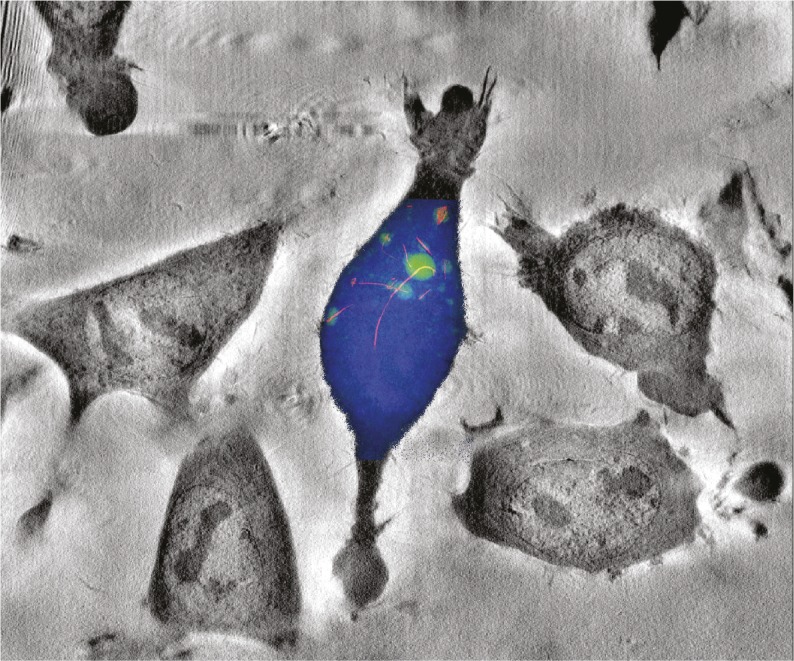Arctic lead pollution and economic history

Drilling ice cores on the Greenland ice sheet.
Industrial lead emissions captured in Arctic ice can provide insight into historical changes in Europe’s economy. To measure and analyze changes in Arctic lead pollution between 500 and 2010 CE, Joseph McConnell et al. (pp. 14910–14915) examined 13 Arctic ice cores from Greenland and Severnaya Zemlya in Russia and used atmospheric transport and deposition modeling to track emissions sources. Prior to the Industrial Revolution, Arctic lead pollution primarily arose from European emissions and increased 250-fold to 300-fold from the Early Middle Ages through the industrial peak of the 1970s. Increases in lead pollution in the ice cores coincided with periods of expansion in Europe, the advent of new technologies, and warm and often wet climate conditions. Decreases in lead pollution paralleled climate disruptions, wars, plagues, and famines. Since the passage of pollution abatement policies, including the 1970 Clean Air Act in the United States, lead pollution in Arctic ice has declined more than 80%, but lead levels are still around 60 times higher today than in the beginning of the Middle Ages, according to the authors. — M.S.
Collaboration between B cells and T cells in celiac disease
B cells are now recognized as key players in autoimmune diseases traditionally thought to be T cell-mediated. B cells can present antigens, which stimulate immune responses, to T cells in autoimmune diseases, but the role of B cells as antigen-presenting cells is not well understood. Rasmus Iversen et al. (pp. 15134–15139) examined the autoantibody response against the enzyme transglutaminase 2 (TG2) in celiac disease, an autoimmune disorder characterized by abnormal sensitivity to gluten proteins found in wheat, rye, and barley. B cells that specifically bind epitopes in the N-terminal domain of TG2 more efficiently took up TG2-gluten complexes for presentation to gluten-specific T cells, compared with B cells that specifically recognize C-terminal TG2 epitopes. Moreover, TG2-specific antibodies from blood samples from patients with different degrees of intestinal inflammation showed a preference for binding to N-terminal versus C-terminal TG2 epitopes. This N-terminal bias was especially pronounced in some children with recently developed celiac disease, compared with adults with established, untreated disease. According to the authors, the results suggest that the preferential targeting of certain N-terminal TG2 epitopes is prominent shortly after disease onset, and that B cells with this form of specificity may be the main antigen-presenting cells for pathogenic gluten-specific T cells. — J.W.
Life span and telomere shortening rate
Aging has been linked to telomeres, which are DNA segments at the ends of eukaryotic chromosomes. Telomere shortening to a critical length can trigger aging and shorten life spans through DNA damage at chromosome ends and loss of cellular viability. However, whether telomere length is a universal determinant of species longevity is unclear. Kurt Whittemore et al. (pp. 15122–15127) used a high-throughput quantitative fluorescence in situ hybridization technique to measure telomere length in peripheral blood mononuclear cells from a variety of bird and mammal species with different life spans and body sizes. In a cross-sectional analysis, the authors sampled blood at one timepoint for individuals that varied widely in age. The animals included laboratory mice, bottlenose dolphins, goats, reindeer, American flamingos, griffon vultures, Audouin’s gulls, and Sumatran elephants. Telomere shortening rate, but not initial telomere length alone, appeared to be a predictor of species life span. Body weight and heart rate were less powerful than telomere shortening rate at predicting species life span. According to the authors, the findings suggest that telomere shortening, and the resulting DNA damage and cellular senescence, may be a determinant of species life span. — J.W.
Toxicity of silver nanowires

Elemental distribution within a single mouse fibroblast cell, showing internalized silver nanowires (red), chlorine-rich endolysosomes (green), and phosphorus (blue).
Silver nanowires (AgNW) have broad potential applications in consumer electronics, but their chemical and physical properties suggest that they may be toxic to cells. Sylvia Lehmann et al. (pp. 14893–14898) found that AgNW toxicity depended on the wires’ diameters. In cultured mouse and fish cells, wires approximately 10-µm long and 30-nm wide were 1–2 orders of magnitude less toxic than 90-nm-wide wires of the same length. X-ray imaging of the cells revealed that the 30-nm wires adopted crumpled and collapsed forms inside cells and were completely contained within vesicles called endolysosomes. By contrast, 90-nm wires remained elongated after being engulfed by cells, with only the ends contained within endolysosomes. The results suggest that when cells engulf AgNW, membrane forces crumple sufficiently thin wires, facilitating containment within endolysosomes, whereas wires too thick to crumple puncture the endolysosome, leading to oxidative stress. In conductive transparent networks fabricated from AgNW, reducing the fiber diameter increased the optical transparency at a given low electrical resistivity. Thus, reducing nanowire diameter in consumer electronics could substantially reduce toxicity without compromising device performance, according to the authors. — B.D.
How antibodies exacerbate influenza progression
Current influenza vaccines trigger the human immune system to produce neutralizing antibodies that disrupt viral infection. However, the immune system produces a range of antibodies in response to a viral challenge, and efforts aimed at developing universal influenza vaccines have begun to focus on nonneutralizing antibodies, which may provide protection via alternative mechanisms. Katie Winarski, Juanjie Tang, Laura Klenow, et al. (pp. 15194–15199) examined the phenomenon of antibody-dependent enhancement, in which nonneutralizing antibodies appear to exacerbate influenza following infection. Using a murine model, the authors show that prophylactic treatment with 2 monoclonal antibodies, MAb 78/2 and MAb 69/1, increases lung damage and elevates viral loads and cytokine levels, compared with controls, in mice infected with the H3N2 virus. Both antibodies affected disease course in a dose-dependent and antibody-dependent manner. The authors also present results suggesting that the antibodies induce conformational changes that destabilize the hemagglutinin stem domain, a highly conserved membrane fusion protein central to influenza infectivity. The study demonstrates the need to assess the safety of next-generation vaccines that elicit nonneutralizing antibodies and therapeutic antibodies that do not block influenza virus–receptor interaction, according to the authors. — T.J.


